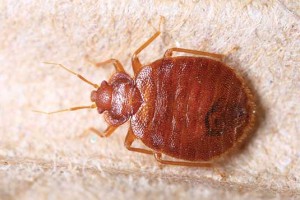Bed bugs build resistance when challenged with a single class of chemicals.
Combine chemical and nonchemical methods for a more effective strategy when treating heavy infestations.
Why are the bed bugs back, anyway? The common explanations are that bed bugs came back because of pesticide resistance, world travel, the banning of all effective pesticides, and/or the end of baseboard spraying. Some believe one or a combination of these is responsible for the resurgence. Some have even suggested the first Gulf War, Operation Desert Storm, is responsible.
A popular fallacy is that correlation implies causation. In other words, when two things happen at the same time, we think one must have caused the other. But that’s not necessarily the case.
As one of my mentors is fond of saying, “There are no endangered insects, only endangered habitats.” As long as their habitat persists in sufficient quantity, the insects won’t become extinct. This is evident when we consider the difficulty of eradicating invasive species. Once they’re established, they’re here to stay. If you reduce or eliminate the habitat in which they live, the insects will diminish, or maybe disappear.
Well, that explains a lot. German cockroaches and house flies, to name two examples, are insects that thrive where humans live and work. There’s no lack of habitat or German cockroaches or house flies. We have made great strides in the battle against German cockroaches during the past 25 years with the advent of the modern baits, but we haven’t eradicated Blattella germanica from society because their habitat is abundant still. Rather, we hear more accounts of cockroaches resurging in homes, restaurants and food plants.
The natural habitat of the common bed bug is the human environment. Looking at the bug now, it’s difficult to conceive of a product or strategy that could do anything more than merely protect individual homes and buildings. If we don’t eliminate the humans, we can’t eliminate the bed bugs. (Naturally, I’m not suggesting we eliminate humans. I am, in fact, a human myself.)
If we can’t drive them back into obscurity, we must at least learn how to eliminate them consistently and efficiently from homes and buildings at affordable prices. If we can understand bed bug behavior and learn how to anticipate their movements, we can devise methods to reduce their spread and prevent the conditions that favor their growth. We’ve come a long way since the turn of the millennium when bed bugs reentered our society, but our efforts to eliminate them even from individual structures are clumsy, tenuous and generally unaffordable.
Down with monogamy
As we examine our common practices, we can find habits that give the bed bugs an advantage. Perhaps the most obvious is our monogamous relationship with a single product. Once we see good results with a product, we marry it and forsake all others. It makes no difference where we are or what obstacles we face, we only need the good stuff. We only use the good stuff, and once we know what it is, we will rely on it exclusively.
While the do-what-works approach has short-term benefits, basing strategies against bed bugs solely on chemistry eventually results in failure. The best practice is using various active ingredients, as well as various formulations.
Adding nonchemical methods to the mix will significantly improve the efficacy of your program and bring more consistent results. The nonchemical methods used against bed bugs should be chosen based on the situation at hand. For heavy infestations, for example, start with a vacuum. If you have the capabilities for heat treatments, use it for cluttered environments. The growing number of portable heat chambers might make this option far more feasible than whole-room heat. Combining heat and pesticide application can be a powerful strategy in difficult situations.
For light or moderate infestations, and when the environment is uncluttered and accessible, the decisions aren’t as crucial. However, it remains important to use more than one product and choose the best formulation for the application site. Use dusts for cracks, crevices and voids, and use liquid residuals for exposed surfaces. It adds time and effort to your preparation, application and documentation, but it pays dividends in shortening the time necessary to achieve control.
Regardless of the infestation, monitors are a nonchemical method that performs three important functions:
1. Monitors will help determine where activity persists, which allows a more focused follow-up treatment.
2. Monitors can remove bugs from the environment. Remember, more so than with other pests, every bed bug counts.
3. A lack of bugs in the monitors can help confirm when control has been achieved.
Carbon dioxide might increase trap catch, but it doesn’t last long and increases labor. There are lures that are supposed to improve trap catch, but we may need more time to know whether there’s an improvement sufficient to warrant the extra effort.
We may never be able to eradicate bed bugs or predict the rise and fall of their populations, but we should be able to reliably eliminate them from a home or building and maintain control.
You can reach Mark Sheperdigian, BCE, at shep@rosepest.com.

Leave A Comment